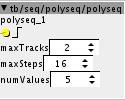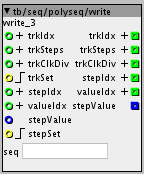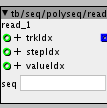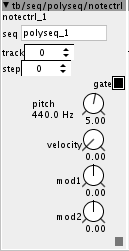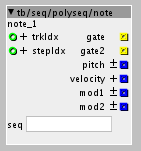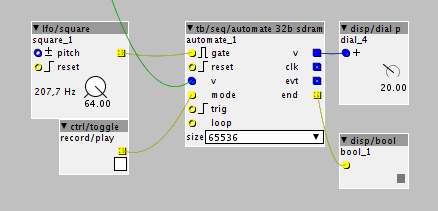tb/wave/wavetable play
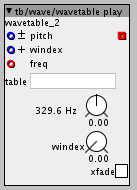
tb/wave/wavetable load

tb/wave/wavetable load fn

status
active
under active development, may have changes...
(play may be renamed to oscillator , though this change will not affect your patches)
version
1.0.10
description:
see help patch for example usage.
use wavetable load to load a wavetable (or single wave), specific number of waves in the wavetable, and the size of each
then use wavetable play as an oscillator , referring to the above table (use .../waveloadobject syntax if used in voice subpatch)
if you select 1 wave, they it can act as a single wave oscillator.
important note: waves is number of waves, and must be a power of 2, size is the size of a single wave and again must be a power of 2... there are min/max for each to keep in reasonable bounds
I'll be adding a video here, of how to create wavetables using audacity. It should be noted, there is a 'skill' in producing decent wavetables, its not all down to size , but content and also the ordering.
windex selects the wave in the table, where 0..64 is proportional e.g. if the number of waves = 4, then wave 2 is selected with 32.
xfade will crossfade between waves,
when combining windex and the parameter windex, the index 'bounces' off the end, it does not cycle. I found this more useful behaviour for my needs.... it also means if you set the param to 64, essentially you go backwards through the wave table. (this is not the same as playing the wave backwards!).
limitation : xfade is still forward.
wavetable load fn, dynamic filename variant , use trig to load , outlet indicates if load was successful or not.
note: wavetable must be same number of waves, and each wave the same size, also like table/load etc, file is loaded in audio thread, so could cause audio glitches.
known issues
aliasing, at high frequency its likely wavetables will alias, I may improve this overtime, or at least come up with a workflow that can help - but please note its not a simple thing to eradicate.
(note for me: pvoc (Phase Vocoding - Dodge and Jerse, 1997) used by many... including MI Clouds , issue seems to be at small bucket sizes, it will tend to smear the sound, ok for fx, no good for oscillators)
writing this, I think it might be nice to have a reverse waves options... not really necessary, since you could always reverse table/wave cycles before loading, but might be fun, especially when using as a single wave oscillator.
changes
0.1 - added simple wavetable for help, add comments to help file
0.2 - added wave/wavetable load fn


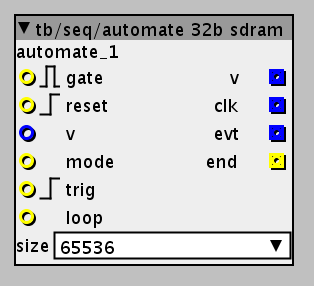
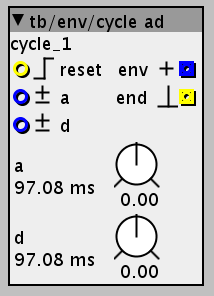
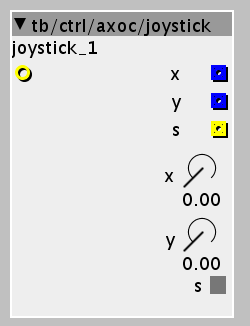
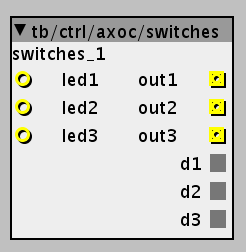
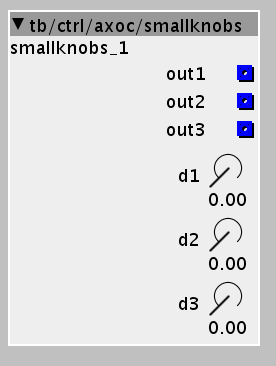
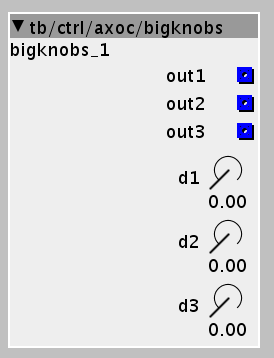





 )
) 